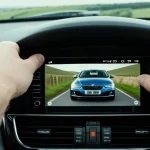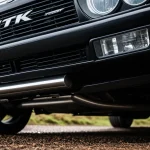Vehicle Maintenance Essentials
Before embarking on a road trip, ensuring your vehicle is in top condition is crucial for a smooth and safe drive. Regular vehicle maintenance can help prevent breakdowns and ensure your trip goes without a hitch.
Regular Checks
Also to see : Ultimate Parent’s Handbook: Navigating the Latest UK Car Seat Regulations for Infant Road Safety
- One of the first things to prioritize is checking the engine oil and other vital fluids like transmission fluid, brake fluid, and coolant. These fluids are essential for the proper functioning of your vehicle, and low levels can cause engine trouble or overheating.
Tire and Brake Inspection
- Checking the tire pressure and tread depth can enhance fuel efficiency and safety. It’s recommended to adjust your tires to the manufacturer’s suggested PSI. Similarly, inspecting the brake system, including brake pads and fluid levels, can prevent accidents and ensure effective stopping power on the road.
Service Intervals
Also to discover : 10 Effective Strategies for UK Drivers to Lower Their Car’s Carbon Impact
- Following the manufacturer’s recommended service intervals before setting out on your journey is also key. If your car is due for a service or there’s any doubt about its readiness, a visit to the mechanic is advisable to identify and address any hidden issues.
By prioritizing these vehicle maintenance steps, you can ensure your car is road-ready, making your travel experience both safer and more enjoyable.
Essential Vehicle Checks
Before hitting the open road, conducting thorough vehicle checks is paramount for a safe and enjoyable journey. Safety inspections form the backbone of road trip preparations, ensuring car readiness.
Oil and Fluid Levels
Start with checking the engine oil; it’s vital for lubricating and protecting engine components. To check, use the dipstick—clean it, reinsert, then pull out to ensure oil is between the minimum and maximum marks. Also, scrutinise other fluids like coolant, brake fluid, and power steering fluid. Low levels can lead to overheating or brake failure, underscoring the need for top-ups and vigilance for leaks beneath the vehicle.
Tire Condition and Pressure
Proper tire maintenance is crucial. Inspecting tire tread depth should show at least 1.6mm for optimum grip, while maintaining recommended pressure (PSI) reduces the risk of punctures and enhances fuel efficiency. Find manufacturer guidelines in the vehicle’s manual. If tread wear is uneven or a tire appears flat, addressing these early can prevent blowouts.
Brake System Evaluation
Brakes are your primary safety mechanism. Prior to a trip, check for warning signs like squeaking, delayed response, or grinding which indicate worn-out brake pads. For self-inspection, measure pad thickness through the caliper. While adding brake fluid can resolve low levels, persistent issues necessitate a professional inspection to mitigate risks on the road.
Packing for the Journey
When preparing for a road trip, packing essentials that ensure comfort and convenience is crucial. Thoughtful travel organization not only makes the journey smoother but keeps you prepared for any unexpected twists on the road.
Packing Essentials
A well-packed vehicle can make a world of difference. Packing essentials include personal items such as clothing, toiletries, and any necessary medications. It’s also wise to include a basic toolkit, flashlight, and water bottles to cover emergencies. Ensuring you have snacks and refreshments can stave off hunger during long stretches between stops, providing much-needed energy for the driver and passengers.
Organization Tips
For optimal travel organization, use packing cubes or bags to separate items by category, making it easier to find what you need without rummaging through everything. Securely arranging luggage not only keeps the car tidy but ensures items don’t shift or become damaged during transit.
Snacks and Entertainment
A good selection of snacks can keep spirits high and energy levels up. Think fruit, nuts, protein bars, and other non-perishables. Entertainment is another aspect not to overlook. Whether it’s through podcasts, audiobooks, or a curated playlist, keeping minds engaged can turn the journey into an enjoyable part of the trip itself. Consider passengers’ preferences to tailor the entertainment to everyone’s tastes.
Navigation and Technology Tools
Integrating the right navigation apps and road trip technology tools can significantly ease your journey. Ensuring you’re well-equipped with essential tools will help avoid unnecessary stress on the road.
Recommended Navigation Apps
Today’s road travelers have a smorgasbord of navigation apps to enhance their journeys. Notable options such as Google Maps, Waze, and Apple Maps provide real-time traffic updates and alternate routes, possibly saving you from unexpected detours and delays. The advantage of using GPS over traditional maps is clear: GPS offers dynamic route modifications based on live traffic conditions and estimated arrival times, ensuring you’re always on the best path.
When choosing a navigation app, consider features like offline maps, spoken directions, and integration with other applications. These can provide a seamless experience and minimise distractions while driving.
Vehicle Technology and Connectivity
In terms of vehicle technology, Bluetooth and hands-free devices are crucial for safe communication. Using such devices ensures you can stay connected without taking your hands off the wheel or eyes off the road, greatly enhancing safety.
Additionally, car gadgets like dash cams and portable chargers can prove invaluable during a road trip. A dash cam can provide peace of mind by recording events should an unexpected traffic event occur, while a portable charger ensures your devices remain juiced up and ready for use throughout your journey. Embracing these technologies allows you to enjoy the drive while maintaining connectivity and safety.
Emergency Preparedness
Being prepared for emergencies is a crucial aspect of road trip safety, ensuring you’re well-equipped for unexpected situations.
Items for an Emergency Roadside Kit
A comprehensive emergency kit is vital. It should include items like a spare tire, jack, jumper cables, flashlight, and reflective warning triangles. These basics can aid in a swift response to vehicular issues, such as dead batteries or flat tires.
Additionally, a portable phone charger is essential to keep communication lines open, while a tow rope can be helpful if your car needs moving to safety. Some vehicle kits also contain multi-tools for minor repairs and adjustments.
First Aid Kit Significance
In addition to mechanical tools, a first aid kit is paramount. Stock it with bandages, antiseptics, pain relievers, and any necessary personal medications. This ensures immediate response to minor injuries or health issues while traveling away from medical facilities.
Safety Tips During Vehicle Breakdowns
In case of a breakdown, ensure your vehicle is visible by using hazard lights and placing reflective triangles at a safe distance from your car. Staying inside the vehicle is often safest if you’re on a busy roadway. If possible, move to a secure location away from traffic or seek professional roadside assistance. By staying calm and utilizing your emergency preparations effectively, you can handle unforeseen events with confidence.
Itinerary Planning and Resources
Planning an effective trip itinerary is an essential component of a successful road trip. A well-designed plan ensures a balance between structured travel and the flexibility needed to enjoy spontaneous adventures.
Creating a Flexible Itinerary
Developing a road trip plan requires both thoroughness and adaptability. To begin, highlight key elements like destinations, must-see attractions, expected travel times, and pitstops for meals or fuel. It’s crucial to integrate both planned activities and free time to allow for unforeseen opportunities or detours. This balance between spontaneity and structure makes the journey more enjoyable and less stressful.
When designing your itinerary, include ample breaks to stretch and relax, particularly on long driving days. This not only helps alleviate travel fatigue but also offers a chance to further explore unplanned but fascinating local spots. Engaging with the local culture can transform your trip into an enriching experience.
Useful Resources and Apps
In today’s digital age, numerous resources and apps are available to facilitate seamless travel planning. To book accommodations and attractions, apps like Airbnb or Booking.com provide a vast array of options and reviews. Additionally, using mapping tools like Google Maps can optimize your route planning, showcasing the best roads to take while factoring in traffic and weather conditions.
For comprehensive travel insights, websites dedicated to travel guides and local attractions play an informative role, offering suggestions and reviews. Leveraging these resources ensures that you’re making informed choices, thereby enhancing your travel experience by focusing on noteworthy sights and off-the-beaten-path gems.
Personal Anecdotes and Insights
Embarking on a road trip isn’t just about the destination—it’s about the unforgettable experiences along the way. Through personal stories, we can gain insights and prepare for challenges, turning potential pitfalls into cherished memories.
One of the most memorable experiences for many travelers involves unexpected detours. Imagine planning a route meticulously, only to encounter an unplanned construction zone. Instead of stress, it becomes a chance to explore hidden gems off the beaten path—quaint diners or small-town festivals that weren’t part of the original itinerary.
Many travelers also recount stories of unexpected car troubles. While initially daunting, these moments offer lessons in resilience and improvisation. For instance, a flat tire might lead to bonding with a local mechanic, resulting in both a fixed tire and a new local restaurant recommendation. These moments highlight the importance of preparedness, ensuring that packing a well-equipped emergency kit can mitigate stress and allow the focus to remain on the adventure.
Personal experiences remind us of the diverse joys that a road trip can offer. Whether it’s the thrill of finding a scenic detour, enjoying serendipitous encounters, or overcoming minor setbacks, these stories encourage travelers to embrace the unpredictable and savor every moment. By sharing these anecdotes, travelers can inspire confidence and excitement for those about to embark on their own journey.









